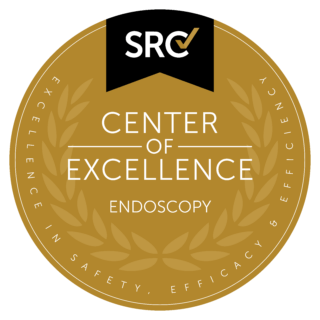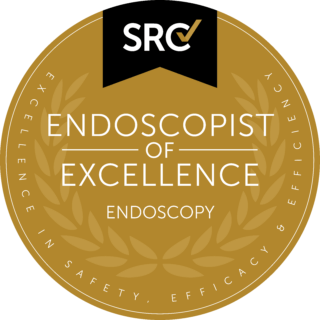EUS Guided Celiac Plexus Block
Endoscopic Ultrasound (EUS) Guided Celiac Plexus Block (CPB), also known as EUS guided pain control is a minimally invasive procedure that is used to treat, or control pain and discomfort associated with pancreatic cancer and chronic pancreatitis.
What is the Celiac Plexus?
The celiac plexus is a group of nerves located in the abdomen that are responsible for sending pain signals to the brain. The celiac plexus block on the other hand is a form of injection that is administered on these nerves (celiac plexus) to stop them from feeling any pain, and as a result stops them from sending messages to the brain. Some celiac plexus block procedures can offer temporary pain relief, while others may offer long-term pain relief.
Although a celiac plexus block procedure is mostly administered on patients with pancreatic cancer and chronic pancreatitis (conditions that cause severe abdominal pain), it can be administered for other conditions including:
- Inflammatory bowel disease
- Crohn’s disease
- Cholangiocarcinoma
- Acute pancreatitis
- Stomach cancer
- Recurrent abdominal pain
What is Endoscopic Ultrasound (EUS)?
EUS is a procedure that involves inserting a thin tube into the mouth, passing it through the stomach and into the upper abdominal organs. The tube has a small ultrasound probe on the tip which emits sound waves that bounce off on the surrounding structures –liver, stomach, pancreas, small intestine, and bile ducts- and then recaptured by the probe which converts them into images. This allows for your doctor to get detailed images of your pancreas since it is located next to the stomach and the small intestine.
Although the EUS is used for diagnostic purposes and to check the size of the pancreatic tumour as well as the location, spread, and to take a sample for biopsy, if the patient is in severe pain, the procedure can be used to treat the side effects of the cancer – severe pain. This is done by damaging the celiac nerves in order to stop them from sending pain signals from the pancreas to the brain.
Symptoms of Pancreatic Cancer
Pancreatic cancer is considered one of the most difficult conditions to detect due to its location and is usually diagnosed when it is in an advanced stage. Additionally, the condition doesn’t show any signs or symptoms until it reaches an advanced stage. Some of these symptoms tend to develop over time, and they include:
- Abdominal pain
- Blood clots
- Jaundice
- Loss of appetite
- Unexplained weight loss
EUS Guided Celiac Plexus Block Procedure
While preparing for EUS Guided Celiac Plexus Block you will be provided with certain instructions. Following these instructions minimizes the risks during and after the procedure. It is recommended that you avoid taking blood thinning medication a week before the procedure and do not eat or drink anything 6-8 hours before the procedure. Also disclose if you are taking any type of medications and if you have a history of heart or lung disease.
EUS Guided Celiac Plexus Block is done under general anesthesia as an outpatient procedure and takes about 15-45 minutes to complete. The procedure is performed in the endoscopy room where you will lie down on a bed on your left side. Your vital signs will be monitored which include placing a blood pressure cuff on your arm, EKG leads on your chest, and an oxygen monitor on your finger.
Most patients do not experience any discomfort during the procedure as they are usually sleepy. Once anesthesia kicks in, the procedure begins.
During the procedure, the EUS allows the physician to directly insert the special needles used in EUS scope at the celiac plexus nerves in order to destroy them using medication. Once the procedure is finished, you are taken to the recovery room where you will be monitored for about an hour after you wake up.
You will discuss the results of the EUS Guided Celiac Plexus Block with your physician and given further instructions and medication such as pain killers and antibiotics before being discharged.
Risks Associated with EUS Guided Celiac Plexus Block
Risks associated with EUS Guided Celiac Plexus Block are minimal and rarely occur, but they include:
- Reaction to anesthesia
- Gastrointestinal bleeding
- Swelling of the pancreas
- Infection of the pancreas
- Tearing
–> BACK TO ENDOSCOPIC ULTRASOUND OVERVIEW


ЗАПИСАТЬСЯ НА ПРИЕМ
